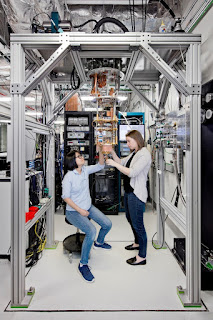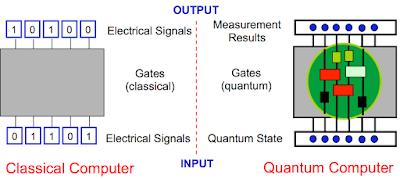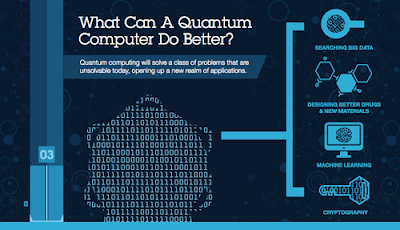Twitter Feed
Stateless Computing
A few days ago I read a review of Merrill Lynch’s Jeffrey Birnbaum LinuxWorld keynote on stateless computing. “With stateless computing, users’ settings and data are automatically saved to the…
Cloud Services
38% of 456 business technology professionals in a Information Week survey indicated that they currently use or will consider using services from a cloud provider. This seems much betterthan the…
Amazon, Elastra and the New Enterprise Data Center
Last week Amazon made an investment into Elastra. Some see this as Amazon’s enterprise play. Others see it as move towards the viability of private clouds. I see it as…
Microsoft Midori
Last week word got out that Microsoft’s new research project codenamed Midori. According to Information Week “the Midori system is being called Microsoft’s first cloud-based OS, and it could one…
Dell Trademarking Cloud Computing
There has been quite a bit of chatter lately over Dell’s attempt to patent “cloud computing”. Last week, the US Patent and Trade Office put an end to those aspirations…
Rob Enderle Cautions on Cloud Computing
Words of caution from Rob Enderle in “The Real Truth and Technology and IT”: “The key to success in the cloud will be keeping solutions simple, plus understanding and mitigating…
3 Important Point for Federal Government Cloud Computing
Point 1: In May, Verizon and AT&T were awarded a DHS task order for just under $1B to provide telecommunications services to the department. Verizon won the lead provider’s spot…
A Cloud Methodology
Although this was published in June, I just saw it and felt it was to good not to repeat: A Methodology for Cloud Computing Architecture Peel off the applications individually,…
IBM Invests Nearly $400M on Cloud Computing Centers
In a press release last week, IBM says that it will spend $360 million to build its most sophisticated, state-of-the-art data center at its facility in Research Triangle Park (RTP),…
Cloud Computing and the NCOIC
According to their website, The Network Centric Operations Industry Consortium (NCOIC) has scheduled a session on cloud computing at their upcoming plenary session in September. In case you haven’t heard…
- The release of a new API (Application Program Interface) for the IBM Quantum Experience that enables developers and programmers to begin building interfaces between its existing five quantum bit (qubit) cloud-based quantum computer and classical computers, without needing a deep background in quantum physics.
- The release of an upgraded simulator on the IBM Quantum Experience that can model circuits with up to 20 qubits. In the first half of 2017, IBM plans to release a full SDK (Software Development Kit) on the IBM Quantum Experience for users to build simple quantum applications and software programs.
The IBM Quantum Experience enables anyone to connect to IBM’s quantum processor via the IBM Cloud, to run algorithms and experiments, work with the individual quantum bits, and explore tutorials and simulations around what might be possible with quantum computing. Since its launch less than a year ago, about 40,000 users have run over 275,000 experiments on the IBM Quantum Experience. It has become an enablement tool for scientists in over 100 countries and, to date, 15 third-party research papers have been posted to arXiv with five published in leading journals based on experiments run on the Quantum Experience.
 The broad availability of quantum computing capability could prove to be a significant blow to current data encryption practices. In 2015 the US National Security Agency actually advised US agencies and businesses to prepare for a time when the cryptography protecting virtually all e-mail, medical and financial records, and online transactions would be rendered obsolete by quantum computing. The US National Institute for Standards and Technology (NIST) is also running a competition to spur work on post-quantum algorithms.
The broad availability of quantum computing capability could prove to be a significant blow to current data encryption practices. In 2015 the US National Security Agency actually advised US agencies and businesses to prepare for a time when the cryptography protecting virtually all e-mail, medical and financial records, and online transactions would be rendered obsolete by quantum computing. The US National Institute for Standards and Technology (NIST) is also running a competition to spur work on post-quantum algorithms. - Drug and Materials Discovery: Untangling the complexity of molecular and chemical interactions leading to the discovery of new medicines and materials;
- Supply Chain & Logistics: Finding the optimal path across global systems of systems for ultra-efficient logistics and supply chains, such as optimizing fleet operations for deliveries during the holiday season;
- Financial Services: Finding new ways to model financial data and isolating key global risk factors to make better investments;
- Artificial Intelligence: Making facets of artificial intelligence such as machine learning much more powerful when data sets can be too big such as searching images or video; or
- Cloud Security: Making cloud computing more secure by using the laws of quantum physics to enhance private data safety.
This content is being syndicated through multiple channels. The opinions expressed are solely those of the author and do not represent the views of GovCloud Network, GovCloud Network Partners or any other corporation or organization.
( Thank you. If you enjoyed this article, get free updates by email or RSS – © Copyright Kevin L. Jackson 2017)
Cloud Computing
- CPUcoin Expands CPU/GPU Power Sharing with Cudo Ventures Enterprise Network Partnership
- CPUcoin Expands CPU/GPU Power Sharing with Cudo Ventures Enterprise Network Partnership
- Route1 Announces Q2 2019 Financial Results
- CPUcoin Expands CPU/GPU Power Sharing with Cudo Ventures Enterprise Network Partnership
- ChannelAdvisor to Present at the D.A. Davidson 18th Annual Technology Conference
Cybersecurity
- Route1 Announces Q2 2019 Financial Results
- FIRST US BANCSHARES, INC. DECLARES CASH DIVIDEND
- Business Continuity Management Planning Solution Market is Expected to Grow ~ US$ 1.6 Bn by the end of 2029 - PMR
- Atos delivers Quantum-Learning-as-a-Service to Xofia to enable artificial intelligence solutions
- New Ares IoT Botnet discovered on Android OS based Set-Top Boxes




